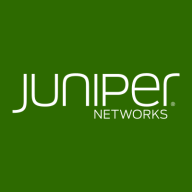


Juniper vSRX and OPNsense are two competing firewall solutions. Based on user reviews, OPNsense seems to have the upper hand in multiple aspects due to its user-friendliness and customization options.
Features: Juniper vSRX has advanced threat protection, scalability, and integration with other Juniper products. OPNsense offers ease of use, comprehensive plugins, and more customization options.
Room for Improvement: Juniper vSRX could simplify its configuration processes and speed up support response times. OPNsense needs better documentation, more frequent updates, and improved official support.
Ease of Deployment and Customer Service: Juniper vSRX has a more complex deployment process requiring specialized knowledge and professional but slow customer service. OPNsense has an easier deployment model suitable for various environments with responsive community support but less structured official support.
Pricing and ROI: Juniper vSRX is seen as a higher-cost solution with significant ROI for large enterprises. OPNsense provides a cost-effective solution with quicker ROI, especially appealing to small to medium-sized businesses due to its open-source nature.



Fortinet FortiGate offers comprehensive network security and firewall protection across multiple locations. It effectively manages data traffic and secures environments with features like VPN, intrusion prevention, and UTM controls.
Organizations rely on Fortinet FortiGate for its robust integration with advanced security policies, ensuring significant protection for enterprises, cloud environments, and educational sectors. It facilitates network segmentation, application-level security, and authentication management, securing communication within and between locations such as branches and data centers. Its efficient SD-WAN and UTM features enable streamlined data management and enhanced threat protection capabilities. Users appreciate its centralized management, facilitating seamless operations across diverse environments.
What are the key features of Fortinet FortiGate?
What benefits should users expect from Fortinet FortiGate?
Fortinet FortiGate is crucial in sectors like education, offering robust networks for secure data flow between campuses and facilitating remote learning. In enterprise environments, it allows efficient management of application traffic and security across multiple branches, while in the cloud, it seamlessly integrates with diverse platforms to enhance security infrastructure.
Juniper vSRX is a virtualized security platform that provides advanced threat protection for virtualized and cloud environments. It offers a comprehensive set of security features, including firewall, VPN, intrusion prevention system (IPS), and unified threat management (UTM).
With its scalable architecture, the vSRX can be easily deployed and managed across multiple virtual machines, making it ideal for organizations with dynamic and distributed networks. It also supports high-performance data processing, ensuring minimal impact on network performance.
vSRX is designed to integrate seamlessly with Juniper's broader security ecosystem, enabling centralized management and visibility across the entire network.
OPNsense is widely used for firewall functionalities, intrusion detection, VPN and IPSec, content filtering, securing network traffic, and remote access. It protects internal networks and manages servers securely, suitable for small to medium-sized businesses.
OPNsense is a comprehensive firewall solution leveraging open-source technology. It integrates with third-party modules like WireGuard and CrowdSec, enhancing its security capabilities. Offering on-premises and cloud deployment, it features an intuitive graphical interface, advanced reporting, VPN functionality, IDS/IPS features, and high scalability. Users find it ideal for small businesses and home networks due to its stability and ease of use. Frequent updates and an active community support its continuous improvement. However, it needs advancements in VPN selection, scalability, and technical documentation. Enhanced high availability, threat intelligence, and integration with virtualization platforms are required. User feedback suggests improvements in connectivity, alerting, traffic monitoring, and antivirus protection.
What are the key features of OPNsense?OPNsense is implemented across various industries to secure network infrastructure and ensure reliable connectivity. In fintech, it safeguards sensitive financial data while maintaining compliance. Educational institutions deploy it to protect student information and enable secure remote learning environments. Healthcare organizations use it to secure patient data and comply with HIPAA regulations. By integrating with tools like WireGuard and CrowdSec, businesses enhance their cybersecurity posture and streamline network management, making OPNsense a versatile choice for diverse operational needs.
We monitor all Firewalls reviews to prevent fraudulent reviews and keep review quality high. We do not post reviews by company employees or direct competitors. We validate each review for authenticity via cross-reference with LinkedIn, and personal follow-up with the reviewer when necessary.